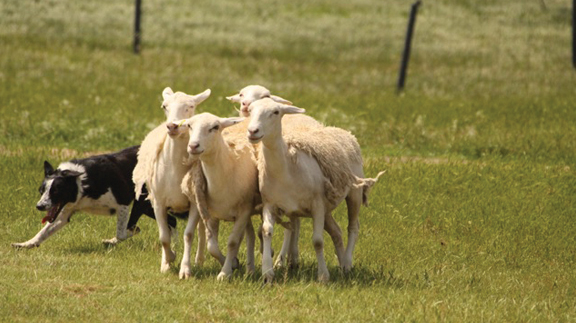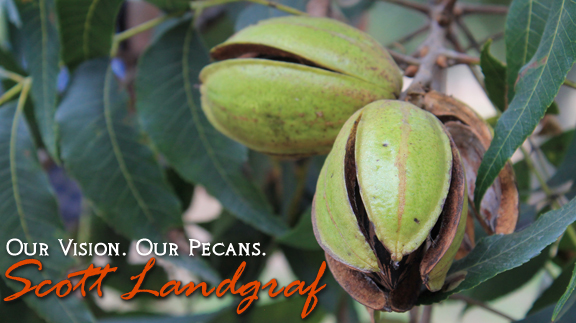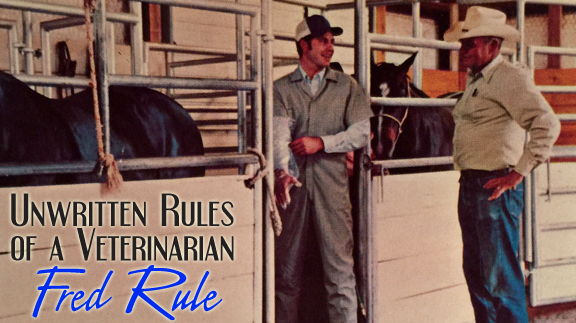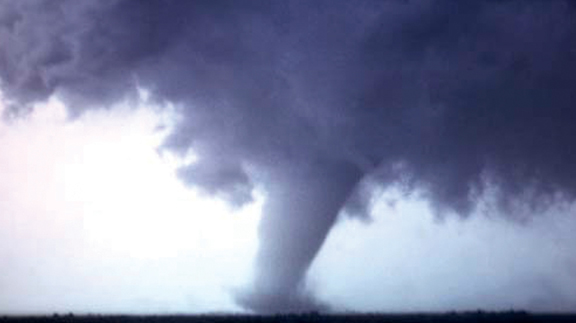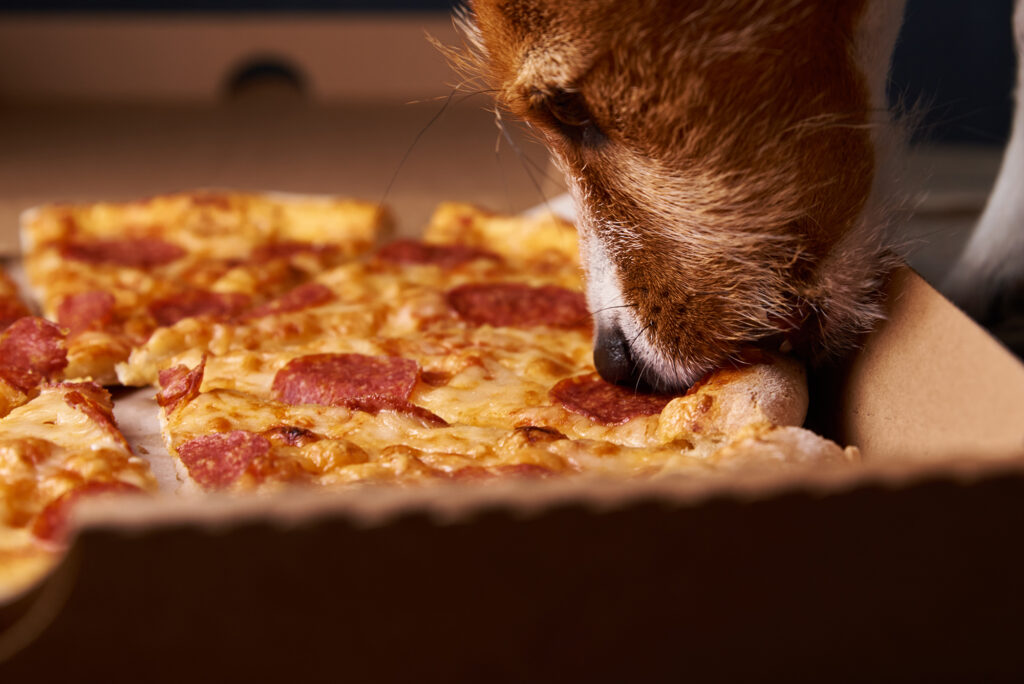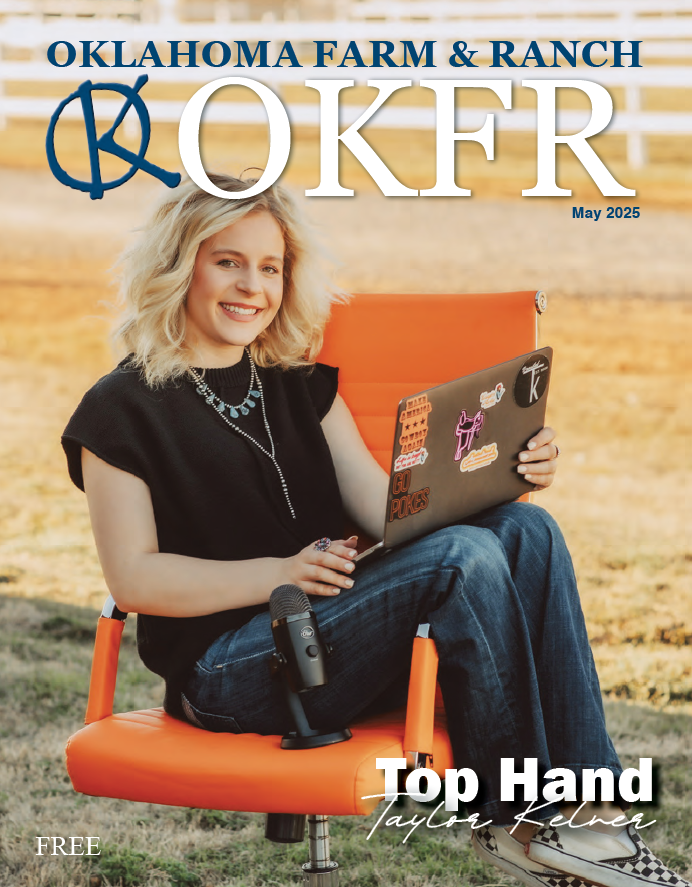Country Lifestyle
July 2018 Profile: John Gosney
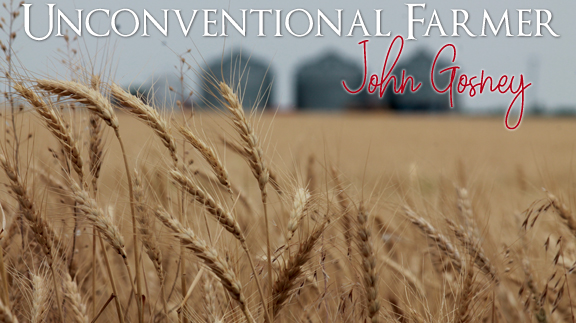
Unconventional Farmer
By Laci Jones
When John Gosney made the transition to becoming a certified organic farmer in the mid- ‘90s, the owner of John’s Farm in Fairview, Okla., did not receive much support.
“The local people here thought I was nuts, so they laughed at me,” he recalled.
While many of the other local farmers did not approve of his methods, Gosney and his wife, Kris (Ratzlaff) Gosney, ultimately decided to become an organic farm to meet the consumer’s growing desire for organic products and perhaps increase the bottom line of his family’s 125-year-old farm.
Gosney’s ancestors homesteaded property in northwestern Oklahoma in the 1893 Oklahoma Land Rush. His grandparents experimented with different crops to learn which would grow in Oklahoma and would have the highest yield. They mostly grew wheat, but also tried growing grapes and corn.
“Grapes and corn were usually failures because it was just too dry out here,” Gosney added.
The homestead was handed down to his parents, where they grew wheat and raised cattle. Born on April 25, 1947 in Fairview, Okla., life on the farm became second nature to Gosney. Like most farm kids, he recalled hand-milking cows at 5 a.m. and helping his family fix fences and other field work.
When asked about stories of his childhood, he recalled driving the family’s four-speed pickup at six years old. He and his father, John Gosney Sr. were on a farm about eight miles from their house.
“We had an old pickup with a load of oats on it,” Gosney recalled. “My dad wanted to get both the pickup and tractor home for night.”
His father told him to drive the pickup without brakes home over one of the Gloss Mountains. As the six-year-old boy climbed in the pickup, he could barely see over the dash.
“Dad said to put the truck in first gear and cruise down the road,” Gosney said.
With his father ahead of him on the tractor, it was a miracle they made it home safely. His mother, Mary Gosney, was not happy when the father-son duo arrived home after the eight-mile journey through Gloss Mountain country.
“I think she was crying when she found out I drove the pickup,” he recalled.
While he enjoyed life on the farm driving pickups with no brakes, Gosney was also active in sports, specifically basketball and baseball.
“I went to a country school, Cheyenne Valley,” he explained.
When the school closed its doors in 1964, Gosney transferred to Fairview High School for his senior year. There, he met Kris Ratzlaff, and they were married a few years later in 1967.
After graduation, John attended Southwestern Oklahoma State University in Weatherford, Okla., pursuing a bachelor’s degree in accounting and business administration.
“[College] was just something to age you I think,” he said with a chuckle. “It was four years to mature.”
Still, the college student knew he would return to the farm, which he did when he graduated in 1969. He returned to the centennial farm, which his father was still managing.
“Most of what I learned about farming was from my mom and dad,” he added. “They used conventional farming practices back then.”
Kris’ family, the Ratzlaffs, were also farmers. Like Gosney, her great-grandfather staked his claim in the Land Run of 1893. That land has been passed from generation-to-generation. Seven generations have resided on the Ratzlaff Oklahoma Centennial Farm.
Together, Gosney and his in-laws started a custom farming business in 1969. They mostly wheat tilled for farmers in the area, he said.
“It was my father-in-law’s idea,” the Fairview, Okla., native explained. “We would contract summer field work for different farmers at a set price.”
A few years later, Gosney began farming part of his father’s land until he officially retired in the mid- ‘70s. Because Gosney took the reins of his family’s operation and rented other land, he quit the custom farming business.
He purchased his own machinery, purchased his own cattle herd and launched a custom harvest business in 1973. Similar to the custom farming business, he harvested wheat for farmers from Texas to Wyoming for a set price, which supplemented his income.
“It wasn’t unusual to have some of the old timers come to me to ask if I’d rent their land,” he explained. “It evolved from a small, couple hundred acres to several thousand. Thankfully it was a gradual growth.”
As every farmer and rancher knows, the agriculture industry is full of highs and lows, and Gosney had his fair share of both. Farmers and ranchers like Gosney were sometimes met with the wrath of Mother Nature.
“Dry weather was a challenge, that’s for sure,” he added. “It was dry, the soil was parched, and we were begging for more much like we are today.”
When their prayers were answered, it was sometimes with an excess of rain or snow.
“We had a lot of large range floods 50 to 70 years ago,” the farmer recalled. “I remember the creek banks overflowing; the fields were covered with water and the bridges on county roads washed out.”
Snow storms throughout the mid and late 20th century also proved to be a challenge for Oklahoma farmers and ranchers.
“I remember as a kid, my dad would have to take the tractor, and mom and I would follow him in a pickup,” Gosney added. “Sometimes we shoveled ourselves out to the road and shoveled more when we’d get stuck. It was amazing how much more snow we had when I was a kid. We haven’t had a good snow here in years with a foot of snow that blows 10-foot drifts.”
Read the July issue to learn more about John Gosney!
Country Lifestyle
Riding for the Brand
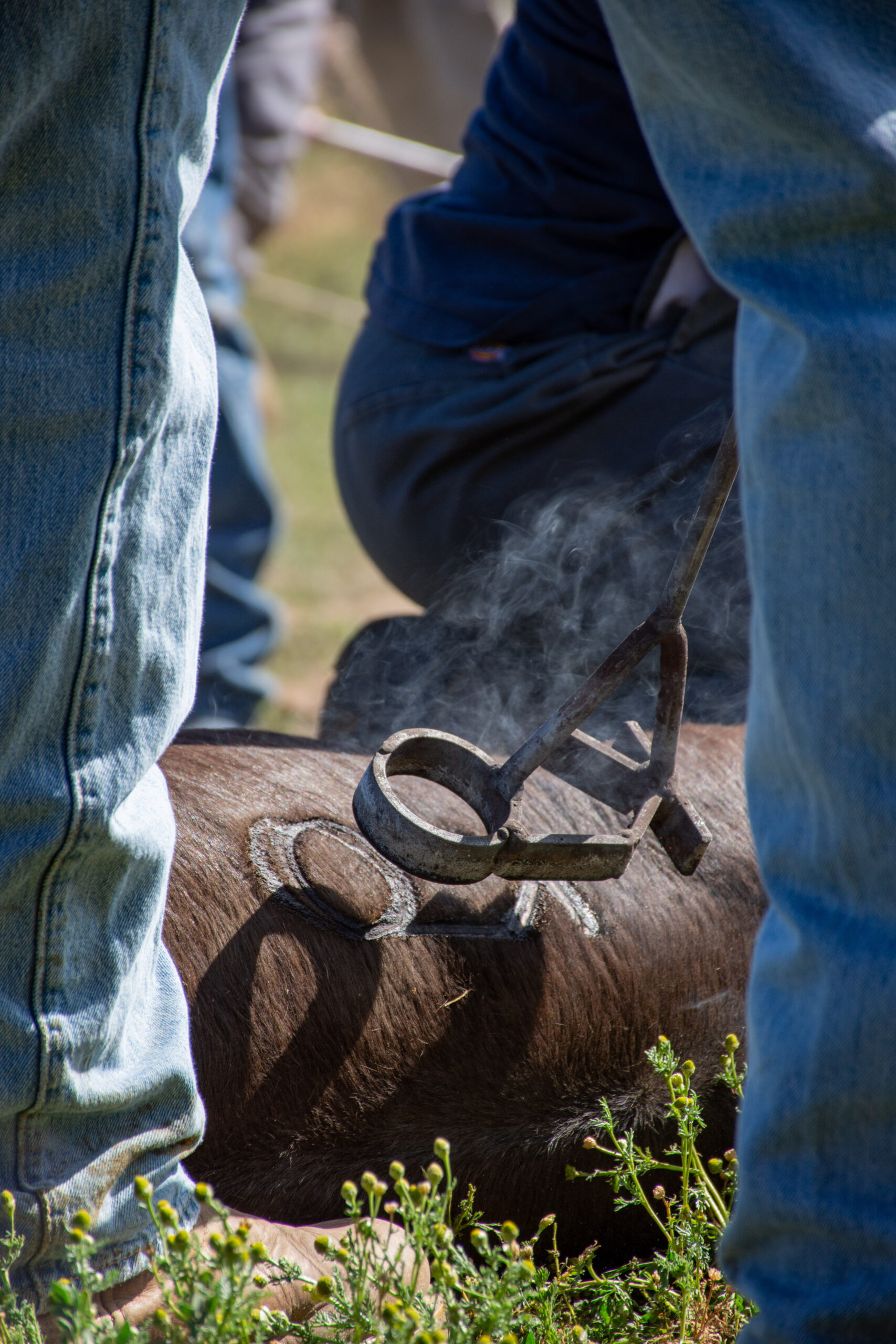
By: Christopher Dysinger
According to the Code of the West a man who has integrity is one who rides for the brand. If you are unfamiliar with cowboy parlance this phrase is used to describe being loyal to the outfit you work for. Cowboys were, “intensely loyal to the outfit they were working for and would fight to the death for it. They would follow their wagon boss through hell and never complain.” -Teddy Blue Abbot. Riding for the brand means being loyal and when I consider what it means to be loyal I am reminded of the words of the Lord Jesus to His disciples in Matthew 16:24, “Then said Jesus unto His disciples, If any man will come after Me, let him deny himself, and take up his cross and follow Me.” To me, to take up the cross and follow the Lord is the epitome of what it means to ride for the brand.
When you place your trust in the Lord Jesus you are signing on to His outfit, to speak the language of the West. When you called upon the name of the Lord Jesus by faith, He saved you and from this point you are riding for His brand. In taking up your cross and following Him you have pledged to be loyal, and this means you face any hardship or trial like a cowboy on the trail moving the herd. Any complaint must be swallowed in the same way you would swallow a cup of coffee. When I hear our faith and loyalty to the Lord Jesus put into these terms it stirs something within me that moves me to keep right on riding for the brand.
Louis L’amour wrote, “Riding for the brand was an expression of loyalty to a man’s employer or the particular outfit he rode for. It was considered a compliment of the highest order in an almost feudal society. If a man didn’t like a ranch or the way they conducted their affairs he was free to quit, and many did; but if he stayed, he gave loyalty and expected it. A man was rarely judged by his past only by his actions. Many a man who came west left things behind him he would rather forget, so it was not the custom to ask questions. Much was forgiven if a man had courage and integrity and if he did his job. If a man gave less than his best, somebody always had to pick up the slack, and he was not admired.” It is the same when a person gives his or her heart to Jesus.
When you come to the Lord Jesus you are not judged by your past. When you come to the Lord Jesus, repenting of sin and seeking forgiveness, everything from your past is left behind. All will be forgiven. 1 John 1:9 reads, “If we confess our sins, He is faithful and just to forgive us our sins, and to cleanse us from all unrighteousness.” When you place your faith in the Lord Jesus you are promising to be loyal and in return you will receive the same. He has promised that He will never leave us or forsake us. When you walk with the Lord Jesus through life you are indeed, “riding for the brand.”
“Riding for the brand” is not just an expression of loyalty nor is it just an expression of pride, it is also an expression of love. When a cowboy claims to be riding for the brand, he is telling any other outfit who may seek his loyalty, that he cannot give it, because he has given his word to another. It is the same when we pledge our faith and loyalty to the Lord Jesus. If any would call us away from Christ we cannot go, because we are riding for the brand.
The End
This article is an excerpt from the book, The Bible and the Code of the West by Dr. Christopher Dysinger.
Country Lifestyle
Farm Dogs & Table Scraps
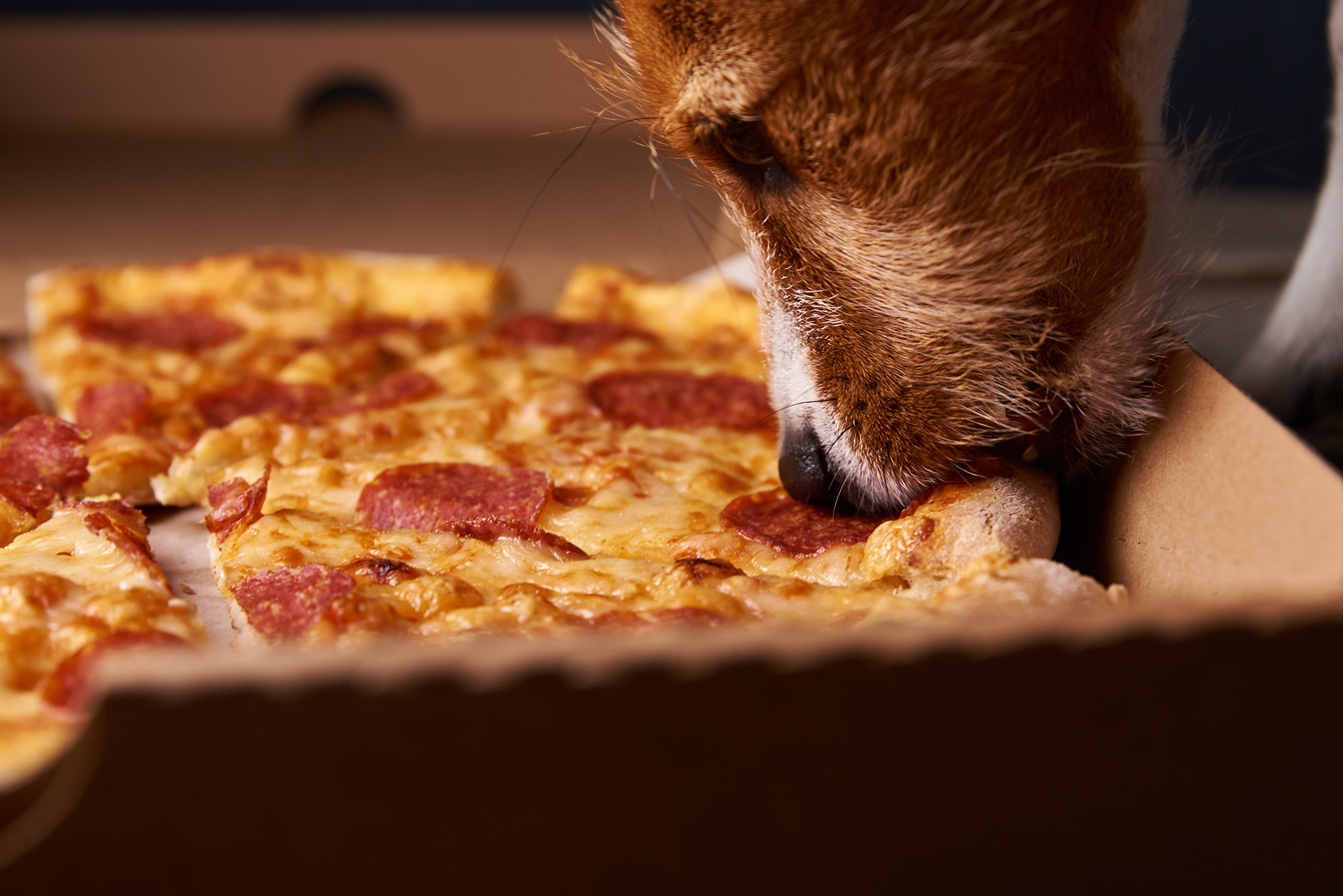
What’s Safe and What’s Not?
Growing up on a farm, our dogs were tough. They roamed the pastures, slept under the barn, and ate just about anything they could get their paws on—whether we meant for them to or not. I’ll admit, I never thought twice when one of our old cow dogs snatched a biscuit off the table or licked up a spill from the barn floor. I’ve even seen a dog steal a whole rib bone off a plate and trot off like he’d won the lottery. And somehow, they always seemed fine.
But here’s the thing—just because they survived doesn’t mean it was safe. For every farm dog that lucked out, there’s another that wasn’t so fortunate. Some human foods can be downright toxic to dogs, and a little bit of bad luck (or a smaller, more sensitive dog) can turn a harmless snack into an emergency.
Common toxic foods lying around the farmhouse
If you’ve got a farm dog—or any dog, really—you need to be aware of the dangers lurking in everyday foods. Some of the biggest culprits include:
Chocolate – The darker it is, the worse it is. Even a little can cause vomiting, seizures, or worse.
Grapes & Raisins – No one’s exactly sure why, but they can cause kidney failure fast.
Onions & Garlic – In large enough amounts, these can destroy red blood cells, leading to anemia.
Xylitol (Found in Sugar-Free Gum & Candy) – This artificial sweetener can send a dog’s blood sugar crashing and cause liver failure.
Alcohol – Even small amounts can be deadly to dogs, affecting their nervous system much more than it does ours.
Bones from Cooked Meat – While not necessarily toxic, they can splinter and cause serious internal injuries.
Macadamia Nuts – These can lead to weakness, vomiting, and even paralysis in dogs.
What to do if your dog eats something toxic
First, don’t panic—but don’t ignore it either. If you know your dog ate something dangerous, call your vet immediately. They can tell you whether to induce vomiting or if it’s something that requires urgent care. If it’s after hours, contact the ASPCA Animal Poison Control Center (888-426-4435) or the Pet Poison Helpline (855-764-7661).
Prevention is always the best medicine, so keep toxic foods out of reach. That might mean keeping the trash can secured, making sure kids don’t slip the dog a treat under the table, or just being more mindful of what’s left on the counter.
Our farm dogs might have been lucky, but luck isn’t a great strategy when it comes to their health. A little awareness goes a long way in making sure they stay happy, healthy, and ready for the next day’s work.
For more information
ASPCA Animal Poison Control: www.aspca.org/pet-care/animal-poison-control
Pet Poison Helpline: www.petpoisonhelpline.com
Visit www.akc.org/expert-advice/nutrition/foods-your-dog-should-never-eat
Country Lifestyle
Summer Squash and Corn Chowder

By Lacey Vilhauer
Total time: 40 minutes
Servings: 6-7
Ingredients
- 6 slices bacon, cooked and crumbled and 1 1/2 Tbsp rendered bacon fat reserved
- 1 1/2 lbs yellow squash, chopped (about 3 medium)
- 2/3 cup thinly sliced celery
- 1 cup diced onion
- 1 Tbsp flour
- 2 cloves garlic, minced
- 2 3/4 cup milk (I used 1%)
- 5 cups canned or fresh cut corn (from about 6 ears corn), divided
- 1/2 cup heavy cream
- 1 1/2 tsp chopped fresh thyme (or 1/2 tsp dried)
- 3/4 tsp salt, then more to taste
- 1/4 tsp freshly ground black pepper, then more to taste if desired
- 3/4 cup shredded cheddar cheese, for serving
- Chopped green onion for garnish (optional)
Instructions
Heat 4 tsp reserved bacon fat in a large pot over medium-high heat. Add celery and onion and sauté 2 minutes then add the squash.
Saute until tender, about 6 minutes, adding in garlic and flour during last 2 minutes of sauteing. Reduce heat slightly.
Add 1 1/2 cups milk, 2 cups of the corn, thyme, salt and pepper to the sauteed veggies.
To a blender add remaining 3 cups of corn, remaining 1 1/4 cups milk and the cream. Process in blender until nearly smooth (about 30 seconds).
Add pureed mixture to pot and stir to blend. Cook until mixture reaches a light boil.
Serve warm with shredded cheese, crumbled bacon and sliced green onions if desired.
-

 Attractions8 years ago
Attractions8 years ago48 Hours in Atoka Remembered
-

 Country Lifestyle9 months ago
Country Lifestyle9 months agoJuly 2017 Profile: J.W. Hart
-

 Country Lifestyle9 years ago
Country Lifestyle9 years agoThe House a Treasure Built
-

 Country Lifestyle4 years ago
Country Lifestyle4 years agoThe Two Sides of Colten Jesse
-

 Outdoors7 years ago
Outdoors7 years agoGrazing Oklahoma: Honey Locust
-

 Equine8 years ago
Equine8 years agoUmbilical Hernia
-

 Outdoors5 years ago
Outdoors5 years agoPecan Production Information: Online Resources for Growers
-

 Farm & Ranch7 years ago
Farm & Ranch7 years agoHackberry (Celtis spp.)

